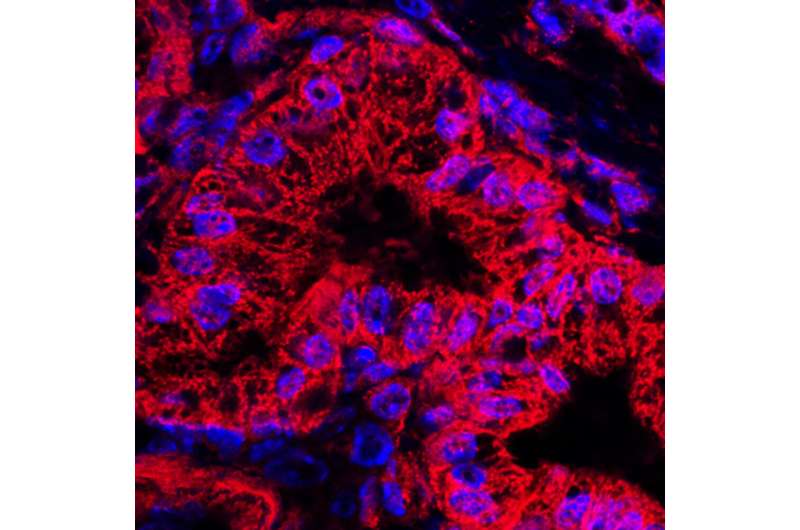
Much of the research on new cancer treatments in the last two decades has focused on genetic targets that allow cancers to grow and spread by altering cell signaling or shutting off tumor suppressors. There is a growing body of evidence that unique features of cancer cell metabolism, though, could provide new opportunities for developing treatments that impact tumors in a direct way while leaving healthy cells relatively untouched.
Researchers at Boston Children’s Hospital and the Broad Institute of MIT and Harvard have discovered that pancreatic ductal adenocarcinoma, a particularly aggressive kind of cancer, uses a unique metabolic pathway, one that normal-growing adult cells rarely use in order to obtain and generate nutrients. This pathway, which requires an enzyme called ornithine aminotransferase or OAT, could present an opportunity to develop new treatments that target PDA specifically, with few side effects.
To support their growth, pancreatic tumors must make large amounts of compounds called polyamines. Most cells use processes that rely on arginine to make the polyamines they need. The microenvironment of pancreatic tumors, however, typically lacks arginine, according to Nada Kalaany, an investigator at Boston Children’s and associate member of the Broad Metabolism Program.
In a study published in Nature, Kalaany and colleagues—including Courtney Dennis, Lucas Dailey, and Clary Clish of the Broad Metabolomics Platform—show that pancreatic tumors then turn to the OAT pathway, which uses glutamine instead of arginine and is predominantly active in infancy and in the fasting adult intestine.
“The cancer overcomes a challenging, arginine-depleted microenvironment by using OAT to make polyamines,” Kalaany explained. “If we target OAT, we can suppress tumor growth.”
To test this idea, the research team tried blocking OAT in cellular and mouse models both genetically (by knocking down its expression) and with a drug called 5-FMO, a known OAT inhibitor. Metabolic and cell growth studies showed that both approaches curbed cancer growth in both model systems.
“Essentially, we want a compound that targets an enzyme that’s primarily used by cancer cells, so you can hit that with minimal side effects,” said Clish who is the Metabolomics Platform’s senior director. “The fact that pancreatic cancer cells but not the majority of normal adult cells have this dependency on OAT to produce the metabolites they need, polyamines, suggests that it’s a potential target one could exploit.”
The findings add another potential option for pancreatic cancer treatment. Kalaany noted that 5-FMO has already been used experimentally for other purposes, and as a result she sees strong potential to translate the findings to the clinic.
“Cancers always figure out a way of getting around things,” she said. “But if we target this pathway, they may not have a way to go around it.”
More information:
Min-Sik Lee et al, Ornithine aminotransferase supports polyamine synthesis in pancreatic cancer, Nature (2023). DOI: 10.1038/s41586-023-05891-2
Journal information:
Nature
Source: Read Full Article